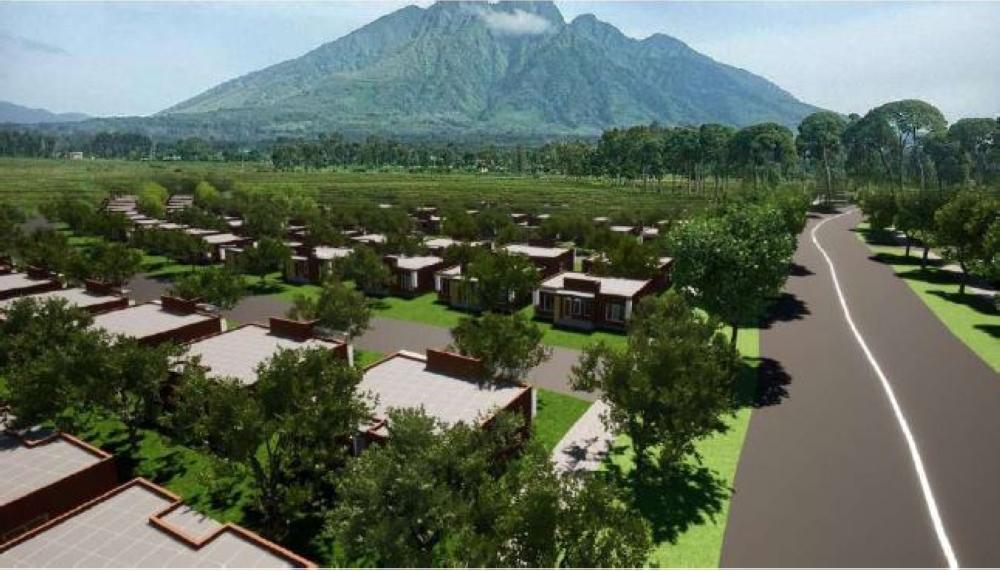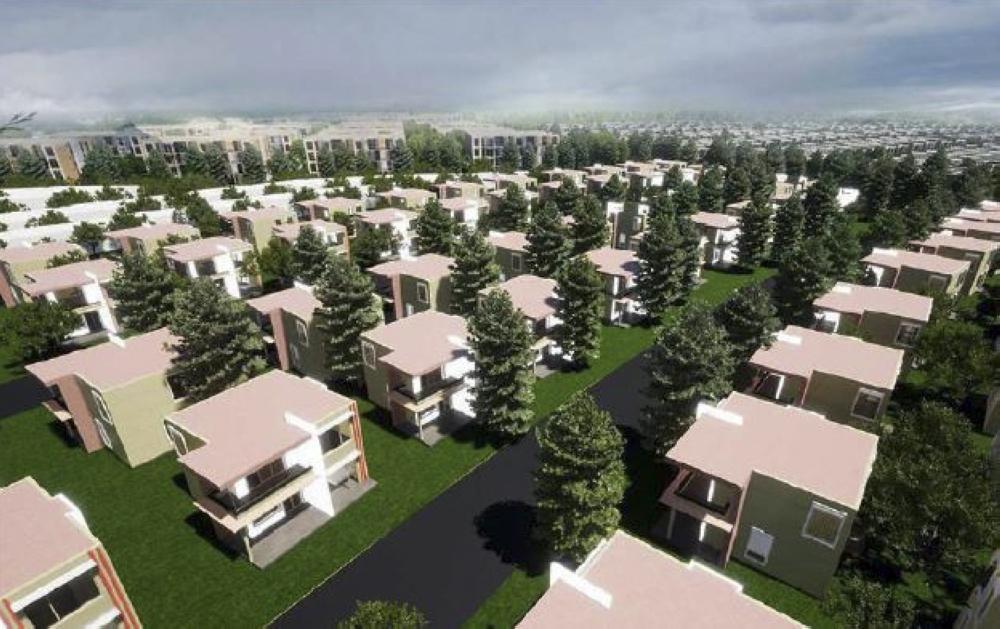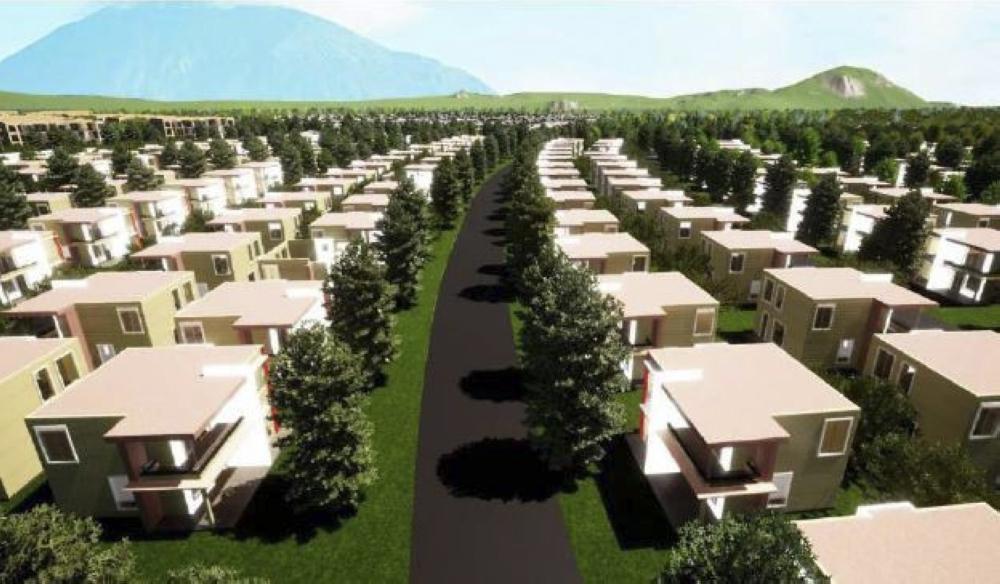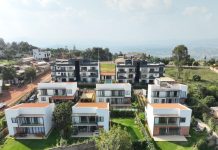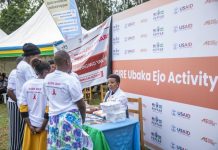Africa-Press – Rwanda. A new land‐use and development master plan for Musanze District has been established by a ministerial order that was gazetted last week. It is projected to be implemented over 25 years.
Musanze District, one of the five districts that make up Rwanda’s Northern Province, is renowned as a gateway to five iconic volcanoes and a tropical rainforest home to mountain gorillas.
The New Times looks at key projects poised to transform Musanze District, which envisioned to be “an excellent centre of the tourism industry.”
1. Ruhengeri airstrip development
According to the master plan, efforts are underway to operationalise Ruhengeri Airstrip in Musanze town as a tourism‐focused aerodrome.
The long-term plan is to upgrade it into an airport to improve accessibility for tourists and visitors coming to explore the region’s natural attractions.
Around 41 per cent of all tourists visiting Rwanda travel to Musanze, making tourism a central focus.
Key attractions include Volcanoes National Park, Lake Ruhondo (one of the Twin Lakes), Musanze Caves (a two‐kilometre developed cave system for tourism), Buhanga Forest and Eco‐Park (a 31‐hectare sacred forest with rich biodiversity), Red Rocks Rwanda (a community tourism hub near the Volcanoes National Park), and the Roots of Nyabingi (a cultural site offering hiking, boat tours and traditional arts, among others).
Buhanga Forest and Eco‐Park is a small forest covering about 31 hectares, described as sacred, known for rituals by the Kings of Rwanda and where enthronement and initiations for kingship are said to have been performed.
2. Canopy walkway for Volcanoes National Park
Diversification of the Volcanoes National Park experience includes trails, guided walks and a proposed canopy walkway, the new master plan states.
A canopy walkway is a suspended bridge or elevated walkway built high in the forest canopy, allowing people to walk among the treetops. Such a canopy walkway currently exists in Nyungwe National Park.
3. Eco‐tourism parks
Mukungwa Urban Eco‐tourism Park, which is part of the newly approved land‐use and development master plan, is set to be established.
The sports and eco‐tourism zone, covering 148 hectares (2 per cent of the urban land in Musanze), will also include Kinigi Eco‐Tourism Development, Musanze Cave Park, Ruhengeri Theme Park, Mpenge River Camping Sites, Agri‐Food Park and integrated lake tourism development.
An additional 163m hectares is allocated for ecotourism across the district.
4. Agri‐Market and Proposed Food Park
By promoting agro‐tourism and local flavours in Musanze, visitors could experience the culture and buy fresh produce from the food market, then carry this to the neighbouring Food Park to enjoy a freshly cooked Rwandan meal.
The space should be used to exhibit the specific agro‐produce of Musanze, for tourists and locals to buy and take home.
The Agri‐Market is proposed to be refurbished to create a destination in the city. It adds to the network of public spaces and is intended to empower Musanze’s women and youth through economic opportunities and cultural tourism.
The Food Park is designated to preserve stream biodiversity and the existing ecosystem.
A major portion of the site will offer outdoor seating and recreational areas. Some zones will be semi‐covered and serve as food kiosks and seating for the Food Park.
5. Ruhengeri Convention Centre
The master plan also envisages a Ruhengeri Convention Centre.
The convention centre would likely feature large event halls for conferences, workshops and exhibitions, integrated with nearby tourist attractions.
6. 200,000 dwelling units
By 2050, Musanze plans to have 200,750 dwelling units, with 112,500 in town, 13,250 in semi‐urban centres and 75,000 in rural settlement sites.
Housing typologies studies show that 10 % of the units will be low‐density (A+) single‐family housing, 35 % medium‐density (A) housing, 35 % multi‐family (B) buildings and 20 % high‐density (C & D) apartment buildings.
7. Two district hospitals
To meet future healthcare demands, the master plan includes two district hospitals, each occupying two hectares, and one referral hospital covering four hectares.
8. Waste treatment plant
Currently, Musanze District lacks a centralised wastewater disposal system. Residents rely on on‐site containment solutions such as pit latrines and septic tanks. To address this, a fecal sludge treatment plant with a capacity of 60 cubic metres will be built.
9. Sanitary landfill development
The existing landfill in Muhoza Sector is substandard. While biodegradable waste is separated and converted into organic manure, a new sanitary landfill is planned under Rwanda’s Sustainable Water Supply and Sanitation Programme.
The proposed site will be located 10 km from Musanze City Centre, on the road to the Cyanika Border. Although the site has been identified, land acquisition is still pending.
10. Dedicated bus lanes and industrial zone
A four‐lane carriageway is proposed for high‐density areas, with 3.5-metre‐wide dedicated bus lane on each side.
Pedestrian walkways will be at least 1.5 m wide, promoting public transport and sustainability.
A continuous, non‐motorised Green Trail will connect natural and urban environments. It includes a pedestrian lane, a cycling lane and a tree verge on each side.
The trail will link major projects such as the Agri‐Market and Food Park with natural features such as streams, forests and hills.
A Light Industrial Zone is planned in Cyuve Sector, Bukinanyana Cell, for agro‐processing and non‐polluting industries.
This zone will support an already existing general industrial park, driving economic growth, creating jobs and fostering innovation in Musanze District.
For More News And Analysis About Rwanda Follow Africa-Press

